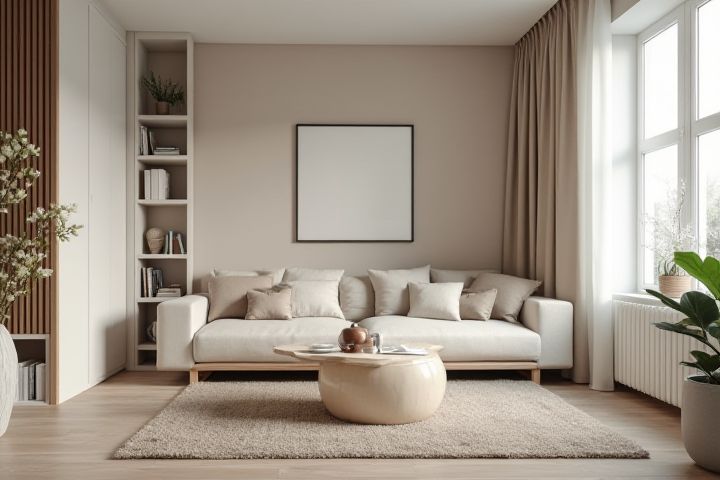
To achieve minimalist living, start by decluttering each room, focusing on items that no longer serve a purpose or bring joy. Categorize belongings into keep, donate, or discard piles to streamline the process. Utilize multifunctional furniture, such as a coffee table with storage, to maximize space while reducing the number of items. Establish designated areas for daily essentials to maintain an organized environment, ensuring everything has its place. Incorporate a routine of regularly reassessing your possessions to avoid accumulating unnecessary items in the future.
How To Organize A House For Minimalist Living
Declutter and simplify
Start by tackling one room at a time, focusing on essential items that bring you joy or serve a practical purpose. Implement the "One In, One Out" rule, ensuring that for every new item you bring home, an existing one must be removed. Utilize storage solutions like clear bins or labeled boxes to maintain visibility and accessibility, reducing clutter and making it easier to see what you own. Consider adopting a 30-day decluttering challenge, aiming to remove a specific number of items each day, which can significantly simplify your living space and promote a minimalist lifestyle.
Embrace multifunctional furniture
Embracing multifunctional furniture is essential for minimalist living, as it maximizes space while reducing clutter. Pieces like a sofa bed or an ottoman with storage can serve several purposes, accommodating both relaxation and organization. Incorporating a dining table that doubles as a workspace allows you to effectively utilize limited square footage without compromising on functionality. Aim for around 30% of your furniture to be multifunctional to maintain a balance between style and utility in your home.
Use neutral and calming color palettes
Utilize a neutral and calming color palette such as soft whites, gentle grays, and muted earth tones to create a serene atmosphere in your home. Incorporating these colors into your walls, furniture, and decor can enhance the sense of space and simplicity, making areas feel larger and more inviting. Prioritize natural light by using sheer window treatments in complementary shades, which helps to maintain a cohesive look while promoting a tranquil environment. Remember, decluttering your space and choosing streamlined, multifunctional furniture in these calming colors can further achieve a minimalist aesthetic.
Maximize natural light
To maximize natural light in a minimalist living space, consider using light, neutral colors on walls and furnishings, creating an airy and open atmosphere. Opt for sheer window treatments that allow sunlight to flood in while maintaining privacy. Strategically position mirrors to reflect light and enhance brightness in darker corners of the house. Lastly, declutter surfaces and maintain a simplified decor to facilitate an unobstructed flow of natural light throughout your home.
Practice intentional purchasing
Practice intentional purchasing by evaluating your needs versus wants before making any purchases. Focus on acquiring high-quality, versatile items that serve multiple purposes, reducing clutter in your living space. Embrace a shopping list to limit impulse buys, ensuring each item aligns with your minimalist lifestyle goals. By prioritizing items that enhance your quality of life while avoiding excessive acquisitions, you create a harmonious and serene environment in your home.
Implement efficient storage solutions
To implement efficient storage solutions for minimalist living, focus on maximizing vertical space by utilizing wall-mounted shelves and high cabinets to keep items off the floor. Invest in multi-functional furniture, such as ottomans with hidden storage or beds with built-in drawers, allowing you to reduce clutter while maintaining accessibility to essentials. Categorize your belongings into frequently used, occasional, and rarely used items, placing the most-used objects within easy reach, ideally in a ratio of 60% accessible to 40% stored away. Consider using clear, labeled containers to easily identify contents, which can enhance organization while ensuring your home remains visually uncluttered.
Maintain clear surfaces
To maintain clear surfaces in a minimalist home, start by decluttering your spaces regularly; aim to review your belongings every few months. Implement storage solutions that keep frequently used items accessible, while limiting visible clutter--consider using decorative boxes or baskets that blend with your decor. Establish designated areas for essential items, ensuring every object has a place to return to after use; this practice fosters an organized ambiance. Lastly, embrace the "one in, one out" rule: for every new item you bring into your home, let go of an old one to maintain balance.
Organize by categories not rooms
Organizing your house by categories rather than rooms streamlines the decluttering process and promotes a minimalist lifestyle. Start by grouping similar items together, such as books, clothing, or kitchenware, which allows you to see the full extent of your belongings and identify duplicates or unnecessary items. Use labeled bins or boxes to contain these categories, making it easier to find what you need while maintaining a tidy space. This method not only simplifies your home but also encourages thoughtful consumption, fostering a more intentional approach to your living environment.
Limit decor to essentials
Limit decor to essentials by selecting only those items that hold sentimental value or serve a functional purpose. Incorporate a color palette of three to four neutral shades to create a cohesive and calming atmosphere throughout your space. Utilize multi-functional furniture, such as a sofa bed or nesting tables, to maximize your living area while maintaining minimalism. Consider implementing storage solutions like clear bins or built-in shelving to keep your belongings organized and reduce visual clutter.
Routine maintenance and reassessment
Establishing a routine for maintaining a minimalist home involves consistently decluttering and reorganizing your space to ensure that only essential items remain. Implement a bi-weekly or monthly schedule to reassess your belongings, evaluating whether each item aligns with your lifestyle and needs. Incorporate a straightforward system for organizing essential items, such as utilizing storage bins or trays for easy access while keeping surfaces clear. By dedicating time to this ongoing process, you foster a living environment that promotes tranquility and efficiency, ultimately enhancing your minimalist experience.
